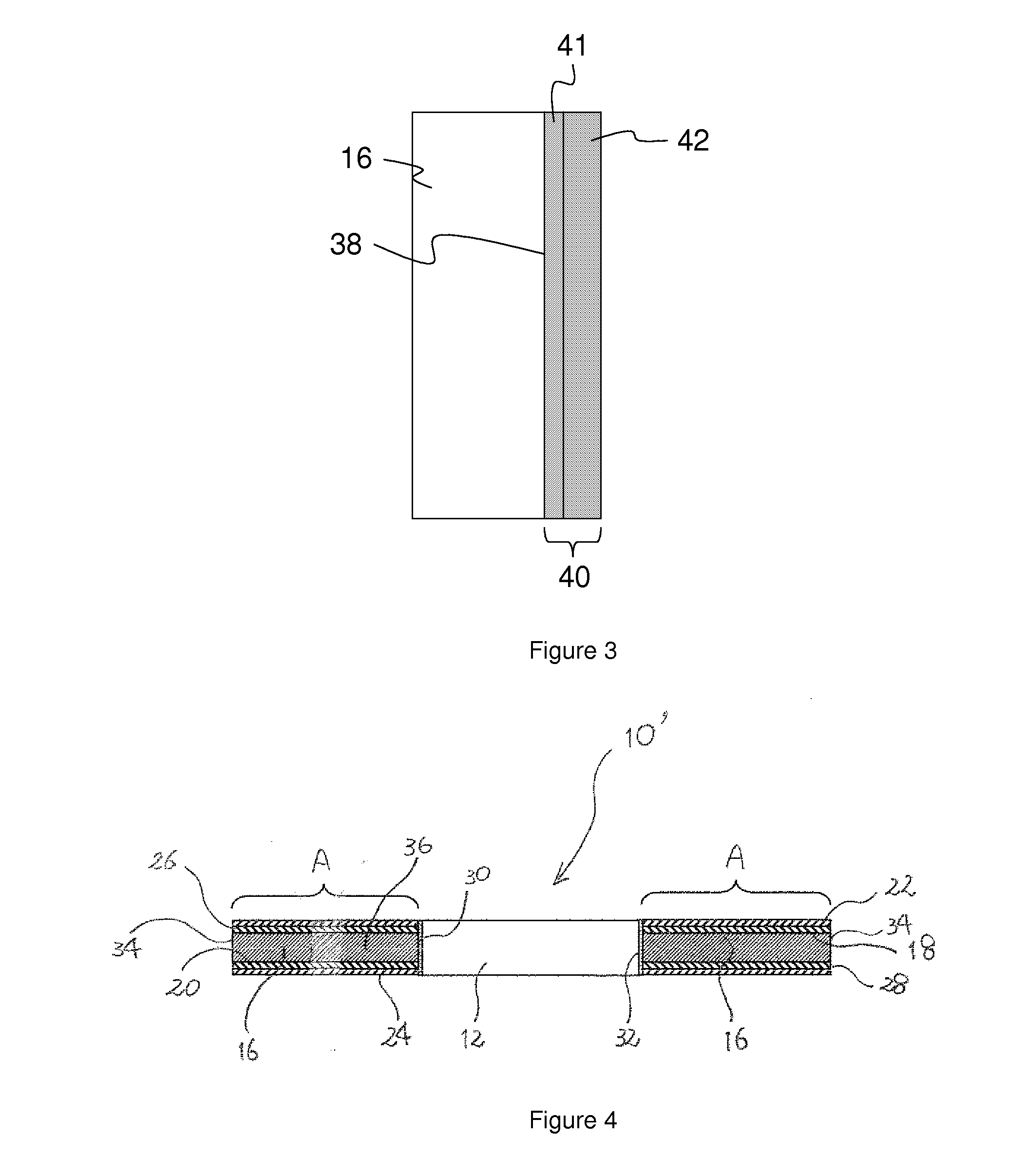Protection Element
- Summary
- Abstract
- Description
- Claims
- Application Information
AI Technical Summary
Benefits of technology
Problems solved by technology
Method used
Image
Examples
example 1
[0064]The protection device of the present invention shown in FIGS. 1 and 2 was produced. Therefore, the protection device 10 was produced which has only the fuse layer 40 but does not have the fuse layer 32. It is noted that eight surrounding throughholes 14 were circumferentially formed at an equal angle interval.
[0065]First, a sheet (a thickness of 0.3 mm; corresponding to the laminar element 16) of PTC composition (a high density polyethylene containing a carbon black particulate material) was prepared, nickel foils (having a thickness of 22 μm, corresponding to the separate metal layers 26 and 28) were positioned on the both side of the sheet, and they were pressed while heating to be integral to obtain a pressure-bonded product wherein the nickel foils were applied to the both main surfaces.
[0066]Throughholes (corresponding to the surrounding throughhole 14) which were of 0.6 mm in a diameter were formed at prescribed positions of the pressure-bonded product, and then plating ...
example 2
[0068]The protection device of the present invention was obtained similarly to Example 1 except that plating process after the formation of the throughholes (corresponding to the surrounding throughholes) was performed by Ni-plating with an electroless plating process and Sn-plating with an electrolytic plating process to obtain a nickel layer having a thickness of about 1.5 μm (corresponding the first metal layer 41) and an Sn layer having a thickness of about 6.5 μm (corresponding the second metal layer 42).
experiment 1
(Experiment 1)
[0069]A current (with 60 Vdc) listed in following Table 1 was passed through the protection device of Examples 1 and 2 from one electrically conductive metal thin layer 22 to the other electrically conductive metal thin layer 24. The maximum value of current which continues to flow without blowing for 10 minutes was defined as “rated capacity”. As a result, the rated capacity of the protection device of Example 1 was 25 A and the rated capacity of the protection device of Example 2 was 22.5 A.
PUM
 Login to View More
Login to View More Abstract
Description
Claims
Application Information
 Login to View More
Login to View More - R&D
- Intellectual Property
- Life Sciences
- Materials
- Tech Scout
- Unparalleled Data Quality
- Higher Quality Content
- 60% Fewer Hallucinations
Browse by: Latest US Patents, China's latest patents, Technical Efficacy Thesaurus, Application Domain, Technology Topic, Popular Technical Reports.
© 2025 PatSnap. All rights reserved.Legal|Privacy policy|Modern Slavery Act Transparency Statement|Sitemap|About US| Contact US: help@patsnap.com



